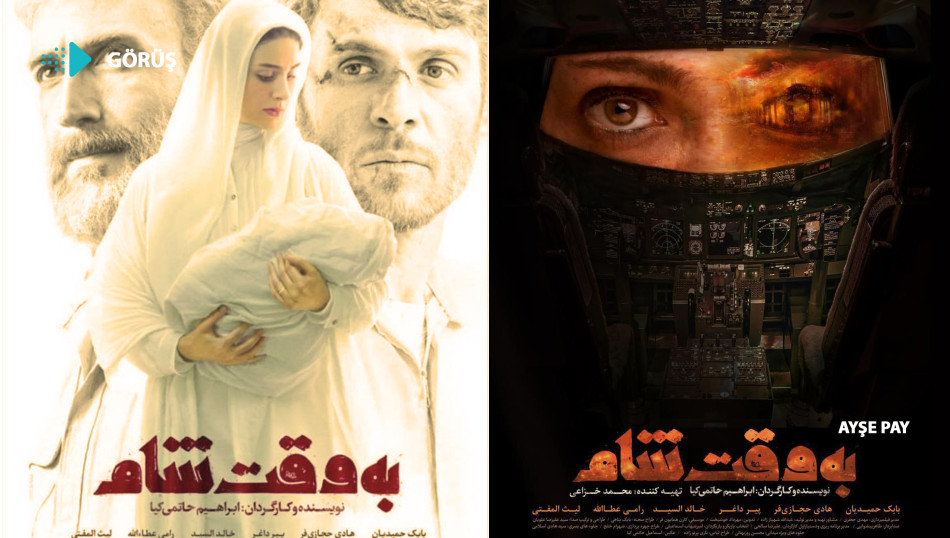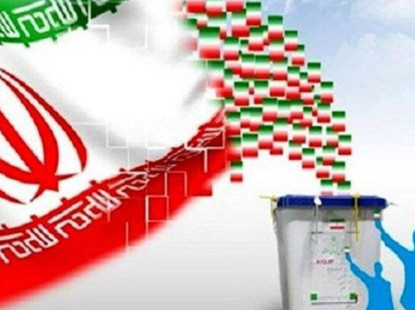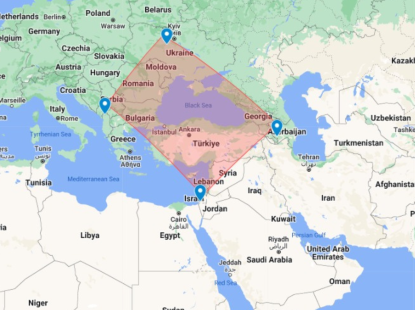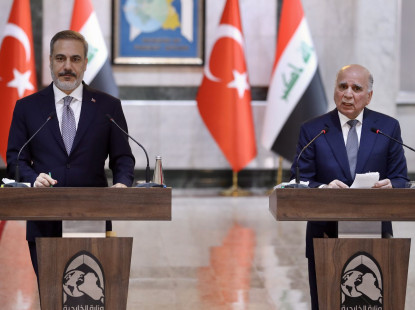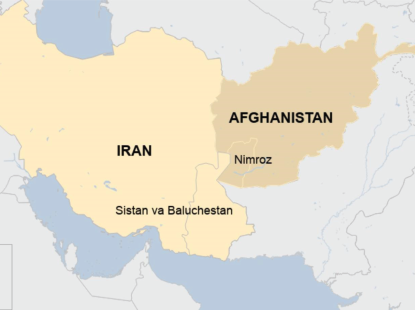Propaganda on the Big Screen: Damascus Time
In his film Be Vakt-i Şâm (Damascus Time), Hatamikia, a prominent director of the “Sacred Defense Cinema”, based on the Iran-Iraq War and its ramifications, narrated a story about two Iranian pilots who set off to bring an Ilyushin aircraft, which was besieged by Daesh during the Syrian Civil War, to Damascus from the ancient city of Palmyra (Tadmor). Throughout his filmography, Hatamikia has focused on the heroes who believe in the Revolution and martyrdom, who fight to maintain order, and some of their contradictions between the ideal world and the real world, however, this time, he turned his visor to another part of the country. Ali (English and Persian speaking), who is thought to symbolize the reformists who dream of another system, is in conflict with his father (Arabic and Persian speaking), who represents idealist revolutionary cadres that carry the responsibility of the nation on their shoulders. Their relationship is based on this conflict. Yet, something more critical than the tension between father (authority) and son (society) exists: security.
To interpret the film Damascus Time (produced by the IRGC-supported by the Owj Media and Art Institution) without comprehending the Islamic Revolutionary Guard Corps (IRGC) and its affiliated Besic Organization’s role in the complex state structure and function, which resembles an inter-power pitched war in Iran, seems impossible. The IRGC, which steadily expands its economic and political power, also activates the role of determining Iran’s domestic and foreign policy, where parliamentary democracy and religious hierarchy are intertwined and many power balances interact. The appointment of the head of the Besic Organization, which established domestic security with more than 24 million volunteers/members, and the commander of the Quds Force (the strongest entity in the Iranian state structure), who, by the leaders of the Revolution, carried out the IRCG’s cross-border operations, have strengthened the effective roles of these institutions in Iran’s domestic and foreign policies. The picture that best illustrates the interaction between the organizations is the scene where former Quds Force Commander Qashim Soleimani kisses Hatamikia on the forehead. So, we can conclude that this is more than just a movie.

Besic as the Guardian of Iran and World Heritage
In the film, the new generation and reformers’ approach to the concept of “martyrdom”, one of Iran’s most prominent sources, is represented through the character of Ali, who seeks to evade the dilemma between fighting and living. Should he fight/die to live, or live to fight/die? Those who live to fight/die, represented by Captain Yunus, are at an impasse. Ali, on the other hand, desires to live with his yet unborn child.
Captain Ali takes permission from Captain Yunus (his father) and boards a plane home to his expectant wife. Although when he receives a message that his father w fly the Ilyushin plane in Palmyra he has a change of plans. He cannot accept for his father, who has not flown for four years, to carry out this duty. Yunus, who notices Ali in the helicopter headed for Palmyra, is confused and angry because Ali is officially on leave. The theme of volunteering, also underlined in Hatamikia’s other films, comes into play here. The action that occurs after a mission is abandoned is done voluntarily and it is emphasized that the main guard of the country is the Besic Organization, an army of volunteers that sprouted under the IRGC.
A Geopolitical Opportunity: Allusion to the Shia Alliance
The roles change after Ali and Captain Yunus settle into their seats in the cockpit of the Ilyushin and set off. Together with the other passengers, they are taken hostage by Daesh militants. The militants, also divided among themselves, carry the sequence of the events to an entirely different course. It is also significant that Palmyra, a UNESCO World Heritage site, was chosen as the main location. With his film Damascus Time, Hatamikia conveys a message to the world, to the geopolitical basin he is in, and to Shiite groups in the Middle East through each Iranian: The world heritage, Middle East, Islamic unity, Shia alliance, and every Iranian are in danger. The only person or persons who will safeguard this heritage, ensure unity, and establish security is none other than the Iranian volunteer army. As “The Islamic Republic of Iran has goals and ideals that extend beyond Iran’s territory. One of the missions assigned to IRGC, one of the main drivers of the official ideology of the Islamic Republic of Iran, is to achieve these goals and ideals.”
Abu Omar al-Sisani/Checheni, a Daesh militant, stares at the camera and calls out to the entire Iranian people via Ali (whose throat we presumed was slashed during a live broadcast of Daesh): “Hey Iranian!” At the end of the film, the camera, while fixated on a schoolyard, repeats the same threat. Likewise, as part of the movie’s promotion planned by the production company, the actors disguised as Daesh militants, with their costumes, horses, swords, and weapons, raided a shopping mall in Tehran. An indicator of the climate of horror that the film is trying to create and a continuation of propaganda.
During the video recording, al-Sisani/Checheni, who hijacked the Ilyushin, commemorates the most densely populated Shiite regions and emphasizes that the main goal of Daesh is to dissolve the Shiite alliance: “8:00 a.m. Damascus time. None of these prisoners are Syrians. Afghan, Pakistani, Iraqi, Lebanese, and Iranian… ”. This emphasis is strengthened in the opening text and the title of the film: “Syria was dragged into a crisis due to the civil war that broke out in January 2010. Daesh leader Abu Bakr al-Baghdadi was eager to establish a government in Syria and Iraq. As the cities fell one by one, those who resisted were subjected to a brutal siege. It was a great human tragedy and there was no way to send provisions except by air. Iranian pilots were among those who spearheaded the delivery of humanitarian aid.”
Stereotypes and Allusion to the Prophet Yunus
Hatamikia sends a message to Iranian youth by referring to the story of the Prophet Yunus’ life through the character of Captain Yunus. Those who believed in the Revolution, martyrdom, and fought for this cause are obsolete, two generations/father and son are trapped in the fish/plane that swallowed them just like in the story of Prophet Yunus. The only way for salvation depends on the last generation; Ali, today’s reformist youth. While the names Ali and Yunus denote Shiism and Islam, the expression Rüstemi, which marks the surname of the father and son, indicates ancient Iranian thought, Iranian nationalism, implying that the threat is valid for everyone in Iran.
The film establishes a structure composed of types and even stereotypes, rather than characters. The idea of stereotype, which has trite and cliché meanings, prepares an ideal ground for quickly defining the interlocutor by including approaches such as prejudice, closeness to personal experience, false impression, social pressure, simplification. The fact that the big screen spins primarily the same types with minor changes reflects this; “... motion pictures reproduce culture-specific stereotypes”. Since film producers prefer the fastest and guaranteed way to deliver their messages to the public due to high production costs. “The main purpose of Hatamikia’s stereotyping the main and side roles and caricaturing of Daesh militants should be sought in the desire to convey the message of the producer of the very high budget film in the shortest way”.
From “Revolutionary Martyr” to “Reformer Martyr”
Damascus Time takes the understanding that evolved from “intercessor Hussein” to “exemplary Hussein” one step further. With the opening script of the film, based on current political events, it alludes to the new vision of Karbala and with the dedication at the end of the film it suggests a new vision of martyrdom: “May this film be a gift to Yahya Nebi, the ‘serdar’ of the line of headless heroes, to Hussein bin Ali and to all the martyrs whose bodies are painted with blood in Damascus today”. According to Hatamikia, for the Leylas (Ali’s wife in the movie) and their children to live, the Alis must leave their Leylas (their sweet drunkenness) and attain the ideal of martyrdom. Otherwise, they are parallel with danger. By turning the revolutionary martyr into a reformer martyr, Hatamikia rebuilds the prominent slogan of the Iranian Revolution “Every day is Ashura, every land is Karbala”.
As a culture-specific stereotype, Karbala and the notion of martyrdom are (being) reproduced in Iran for every period and for all times. During and after the Revolution, sampling and paring Karbala and its martyrs and current political events attempted to create striking nexus points, which to a great extent was achieved. The two posters used in the promotion of the film also support this: Iran will either leave bright days for its children by adding new victims to the chain of martyrs or will be buried into dark tomorrows in a plane/fish (the global threat ready to devour Iran at any moment) as a prisoner of a Daesh militant, who is ready to step on the pin of a bomb (penetrated into the cockpit).
